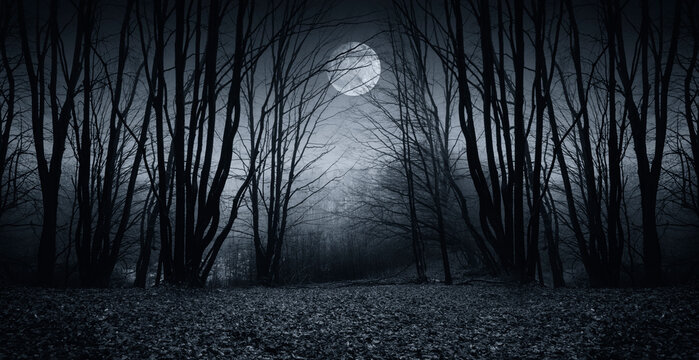How to write settings that stick

There are a million posts on how to write settings or imagery, and most repeat the same info. So what are you supposed to do when none of that is working? Here’s some tips you hopefully haven’t heard before from the perspective of someone a writer, a painter, and a visual learner.
One problem I’ve run into a lot is that my characters visit a lot of the same places. This tends to make scenes blend together or get confused, because there’s no “visual” difference between them. For example, my OC’s tend to spend a lot of time in the forest. How can I make forest scenes interesting?

These pictures are all taken the same place, from the same angle. The only difference is seasons and time off day, which affects the lighting. As an artist, lighting makes a HUGE difference, and it’s essentially what the mood depends on. If your character visits the forest, how are they feeling? The settings should reflect that mood.
And remember, it’s how you describe it (and what you decide to point out) that gives it the mood. Winter does not equal sad and summer does not equal happy- unless you want it to. Here’s some examples, using the forest, on how you can use seasons, temperature, weather, time of day, ect. to make your imagery really pop and be memorable.
Example 1

Buttery afternoon sunlight slanting through the trees, the crunch of fallen leaves, a palette of dark green and yellow leaves, the distant sounds of the village muffled by the trees, birds chirping.
Example 2
The crunch of autumn leaves, trees in red and orange and yellow and brown, the smell of woodsmoke somewhere, a squirrel running up a tree as you approach, the hazy gray of the sky, the crisp smell of morning air, the crunch of eating an apple as you walk.
Example 3
Clouds covering the moon, the smell of rain that hasn’t fallen yet. The rustle of fallen leaves under your shoes as you run, the path dim. Spooky shadows and shapes between the trees, just beyond the reach of the lantern light as you hurry past. Jagged branches carving into the sky like gnarled, grasping fingers.
Example 4
(Same setting, different mood) The dim halo of the moon illuminating the clouds, the fresh smell of rain falling somewhere, the comforting glow of the lantern light, racing the rain home, knowing someone you love is waiting for you at home.
You can literally Google “pictures of the forest,” pick one that fits your mood, then write your setting as if you’re trying to describe the picture to someone over the phone. That chunky paragraph of pure description you can use as a starting point and sprinkle it through your scene.
If there was background music, what would it sound like? Happy? Anxious? Adventurous?
Think about real life. Walking into your kitchen is nothing exciting. But at 3am? It’s kind of scary, especially if you have big windows. 3pm, when there’s delicious smells coming out of the oven? Heavenly. It’s all about the mood. Readers aren’t going to remember the color of the door or what the countertops are made of, they’re going to remember how the emotions- how they felt, how the characters felt. And that’s the trick to writing memorable settings that stick.




